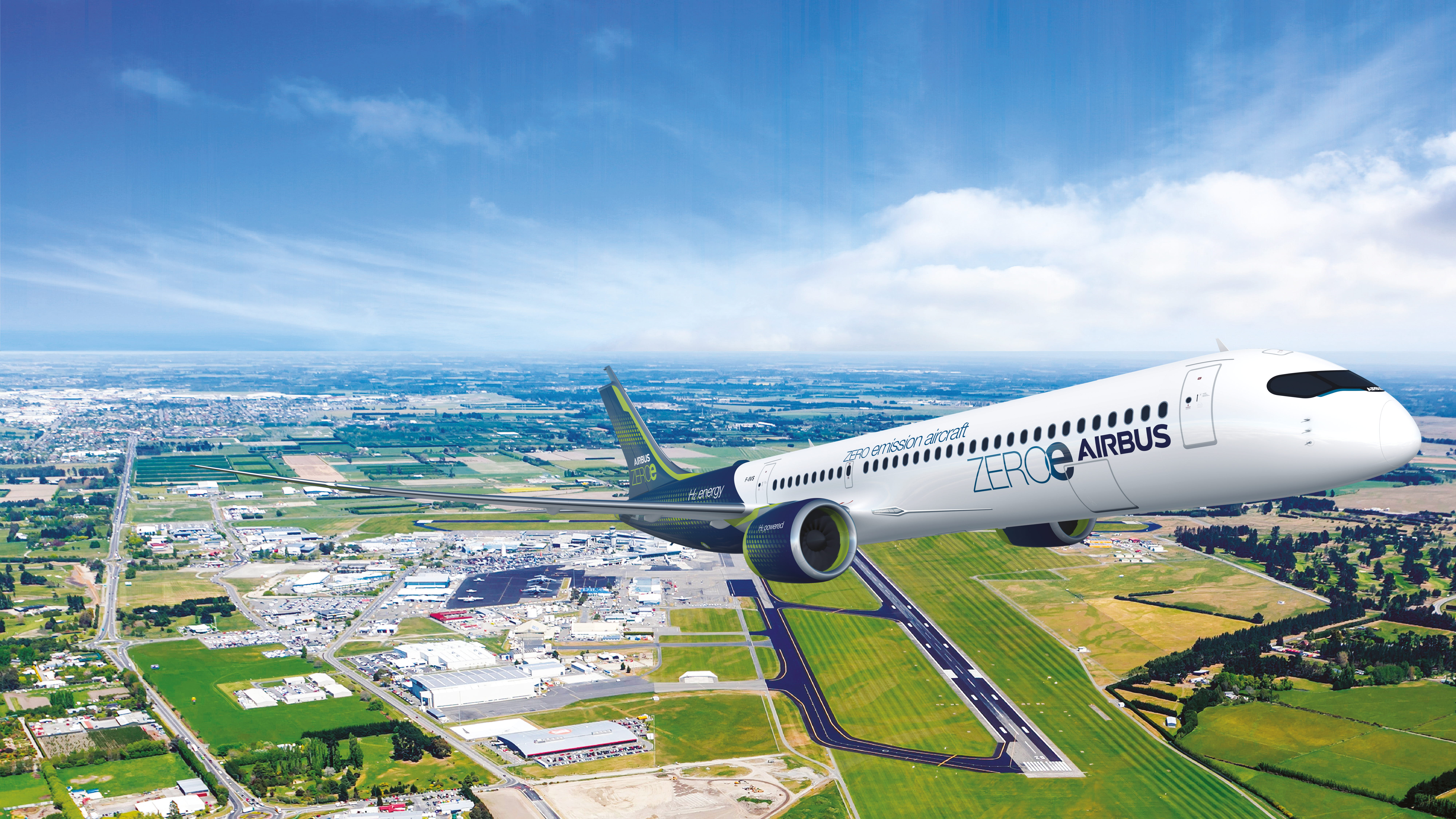7 Sep 2023
Consortium lays pathway for green hydrogen aviation to take flight in New Zealand
A new report called ‘Launching green hydrogen powered aviation in Aotearoa New Zealand’ demonstrates how the consortium members could work together to remove up to 900,000 tonnes of carbon emissions every year by 2050 through the use of hydrogen-fuelled aircraft flying New Zealand domestic routes.
The report has just been released by the New Zealand Hydrogen Aviation Consortium – a partnership of six international businesses Airbus, Air New Zealand, Christchurch Airport, Fortescue, Hiringa Energy and Fabrum.
Launched in February 2023, the Consortium has spent the last six months examining the hydrogen supply chain, evaluating the local aviation market’s projected hydrogen requirements, and scoping what it would take to establish a successful hydrogen ecosystem for aviation in New Zealand.
The Consortium has also developed recommendations for the regulations and incentives needed to support the transition to a green hydrogen aviation system.
Airbus is working to develop the world’s first hydrogen aircraft for commercial use.
Its ZEROe Ecosystem Vice President, Karine Guenan says New Zealand is uniquely positioned to lead the testing and deployment of low carbon aircraft.
“The country’s large potential renewable electricity and water resources are key advantages while the size of aircraft used here and the length of routes flown match the capabilities of hydrogen-powered aircraft. This report lays out the ecosystem required to make that happen. It is a first step and Airbus is committed to leveraging our expertise to work with government, iwi, industries and other stakeholders to bring it to life,” says Guenan.
Christchurch-based company Fabrum is already working on hydrogen aviation projects overseas. Its Chairman and Co-Founder Christopher Boyle says green hydrogen is an important part of the future of clean flight.
“Our team co-developed the world’s first electric aircraft engine for Magnix and built superconducting electric motors and rotors for SAFFRAN and Airbus. We’re currently manufacturing green hydrogen systems for airports and on-board liquid hydrogen tanks for low emission flights. The opportunity to use our experience to ensure green hydrogen aviation takes off in New Zealand is exciting.”
Air New Zealand Chief Sustainability Officer, Kiri Hannifin says the Report provides information that could be used to build out a blueprint for hydrogen-powered aviation in New Zealand.
“Air New Zealand is committed to decarbonising its operations. Green hydrogen fuelled aircraft is one of the potential levers we have available to us. This report provides important proof points for both the aviation sector and decision-makers to work together to make that happen.”
The report shows that to enable green hydrogen aviation to take-off, New Zealand will need to:
- Scale affordable new generation renewable energy in New Zealand to support the production of green hydrogen.
- Develop the transmission and distribution capacity to move that renewable electricity to where it is needed.
- Develop policies and regulations to create and support a green hydrogen ecosystem.
- Develop a range of new systems and processes to ensure the safe production, distribution and use of green hydrogen.
- Become more cost-effective to produce and supply green hydrogen to ensure its commercial viability.
The Consortium’s modelling shows New Zealand could use up to 100,000 tonnes of green hydrogen per year for hydrogen-fuelled aircraft by 2050 with most of it required to fuel planes at Auckland, Wellington and Christchurch airports.
Christchurch Airport General Manager Future Planning and Sustainability Nick Flack says up to 6,700-gigawatt hours of renewable energy will be required to generate that green hydrogen.
“That’s up to 16% of New Zealand’s current total electricity supply. That demand presents an opportunity for businesses. We’ve now committed to progressing a hydrogen hub as part of our 400-hectare renewable energy precinct, Kōwhai Park. Twenty other airports around the world are doing the same,” says Flack.
Fortescue’s Global Aviation Lead Amy Barrett says while establishing green hydrogen aviation in New Zealand will be challenging, the report indicates it’s a practical and implementable solution.
“Aviation, like our own iron ore operations, is one of the hard-to-abate sectors. Hard-to-abate doesn’t mean impossible to decarbonise – it just requires a lot of effort and long-term commitment. It also needs collaboration, and that’s what we are doing here, we know we need to work together to find the best solutions.”
Hiringa Energy Chief Executive, Andrew Clennett, says the report highlights the need to have physical and regulatory infrastructure in place to enable low emission aircraft to be trialled and deployed in New Zealand.
“Green hydrogen is integral to the decarbonisation of New Zealand’s domestic aviation network, and why it made perfect sense for Hiringa to join the consortium. By sharing our first-hand technical, operational and commercial expertise, we hope to accelerate New Zealand’s already thriving green hydrogen landscape, and lead the world in the transition to clean aviation.”
*based on new vehicles driving 10,000 kilometres per year.
You can read the New Zealand Hydrogen Aviation Consortium's report here.
